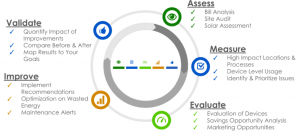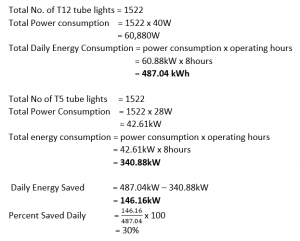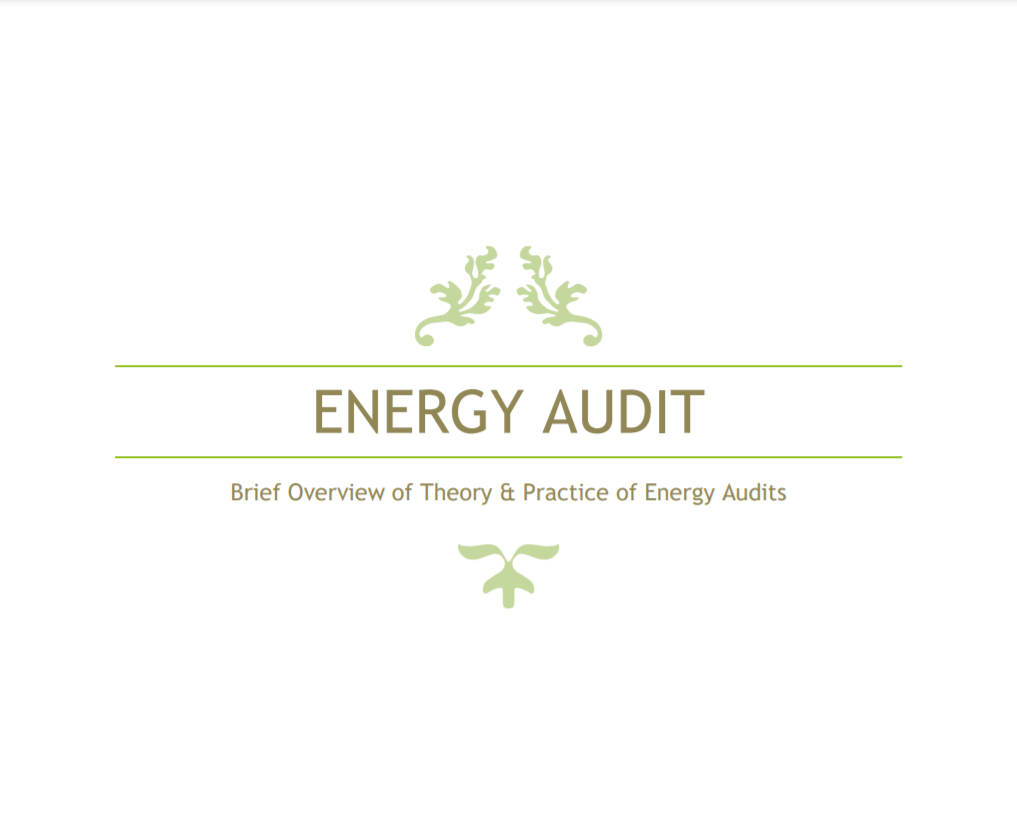In addition to combatting climate change and global warming, financial incentives can also be derived from implementing energy conservation. It is well evidenced that electricity tariffs represent a significant contribution to expenditures in both households and companies. In the US, it is estimated that for an average office building, electricity contributes US$1.34(TT$9.11) per square foot to annual expenditure. Likewise, in Trinidad and Tobago, despite subsidized electricity costs, the average household electrical tariff is upwards of TT$1000. As such, minimizing unnecessary electrical usage stands to result in increased revenue for households or profit for companies.
By conducting an energy audit, one can gain further understanding of their energy consumption and subsequently equip themselves with knowledge to help reduce needless expenditure.
The steps to conduct and energy audit are outlined below:
- Assess: Collect previous years records of utility bills to provide you with historical data of energy usage.
- Measure: Conduct a walk through of property to properly identify the amount of equipment such as lights and air-conditioning units and how the duration of their daily usage.
- Evaluate: Develop a base-case model that represents the buildings existing energy use. Acquire architectural, mechanical and electrical drawings as well as test for efficiency and performance of equipment.
Validate and Improve: Create a list of cost effective energy conservation measures. Using old data from previous steps compare to these new measures to determine the cost savings that would be achieved on implementation.
%22%20transform%3D%22translate(.8%20.8)%20scale(1.53906)%22%20fill-opacity%3D%22.5%22%3E%3Cellipse%20fill%3D%22%23d0d0d0%22%20rx%3D%221%22%20ry%3D%221%22%20transform%3D%22matrix(7.29242%20111.29377%20-55.5071%203.63705%20142.2%2067.4)%22%2F%3E%3Cellipse%20fill%3D%22%23fff%22%20cx%3D%2236%22%20cy%3D%2258%22%20rx%3D%2241%22%20ry%3D%22255%22%2F%3E%3Cellipse%20fill%3D%22%23fff%22%20rx%3D%221%22%20ry%3D%221%22%20transform%3D%22matrix(38.9389%20-5.4521%2017.67455%20126.23165%20235%2058.8)%22%2F%3E%3Cellipse%20fill%3D%22%23fff%22%20cx%3D%2234%22%20cy%3D%2233%22%20rx%3D%2239%22%20ry%3D%22255%22%2F%3E%3C%2Fg%3E%3C%2Fsvg%3E)
Fig 1. Diagram Showing the Steps on Conducting an Energy Audit
The positive results of the implementation of energy audit practices have been exemplified in the literature. One such example of this has been demonstrated in Limerick, Ireland in a gel and toner manufacturing factory. The factory’s annual energy usage was 295,584kWh without the presence of an energy management system. After conducting an audit, the following measures were implemented to aid in reducing the factory’s energy usage:
- Reducing maximum electricity import capacity
- Eliminating electricity wastage
- Diverting less energy to the smaller factory units
- Installing Light controlling sensors
- Replacing less efficient lighting fixtures with more efficient LEDs
After implementation of the above energy savings of 53,579kWh were achieved translating to cost savings of €16,300(TT$130,438.73) per annum. The second case study provided similar energy saving end results. This study took place in the School of Energy and Environmental Management in Bhopal, India. Similar processes were conducted.
- Identify all equipment
- Collect energy use data on each
- Collect energy use data on higher efficiency equipment
- Compare their daily energy usage
Calculations were carried out to show the difference in energy use between the two types of equipment. An example of that is shown below.
Energy Savings by replacing the T12 tube lights with higher efficient T5 tube lights is as follows:
%22%20transform%3D%22translate(.8%20.8)%20scale(1.55469)%22%20fill-opacity%3D%22.5%22%3E%3Cellipse%20fill%3D%22%23cecece%22%20cx%3D%22117%22%20cy%3D%2291%22%20rx%3D%2232%22%20ry%3D%22124%22%2F%3E%3Cellipse%20fill%3D%22%23cfcfcf%22%20rx%3D%221%22%20ry%3D%221%22%20transform%3D%22matrix(66.08148%209.05204%20-3.16638%2023.11515%2048.7%206.5)%22%2F%3E%3Cellipse%20fill%3D%22%23fff%22%20rx%3D%221%22%20ry%3D%221%22%20transform%3D%22matrix(-33.22434%20252.82631%20-74.2725%20-9.76028%20230.2%2066.9)%22%2F%3E%3Cellipse%20fill%3D%22%23fff%22%20rx%3D%221%22%20ry%3D%221%22%20transform%3D%22rotate(159.6%204.5%2072.3)%20scale(50.78814%20125.44868)%22%2F%3E%3C%2Fg%3E%3C%2Fsvg%3E)
By carrying out similar calculations for each identified equipment a total of 294.74kWh was saved daily providing annual savings of 77,221.88kWh.
It is evident that energy audits are a crucial tool in putting energy conservation into practice. They provide an oversight of homes’ or businesses’ energy usage and may highlight areas which can benefit from improvement, thus creating opportunities for savings. The Kenson Group envisions, and endeavours to promote a future where energy auditing is a common practice nationwide. We hope to have made clear the associated environmental and financial benefits, and encourage others to take the first steps in adopting energy auditing, as seen in the template below:
- Look at your most recent utility bill and determine how much you would like to see it reduced
- Start small, such as beginning with changing all incandescent lights to LEDs count how many lights you have and thus how much you’ll need to change.
- Look at all equipment in your house can you afford to replace any of your old ones with newer more efficient ones.
- After you make your changes compare your next electricity bill with an older one. If you want more in savings continue with your energy conservation methods.




